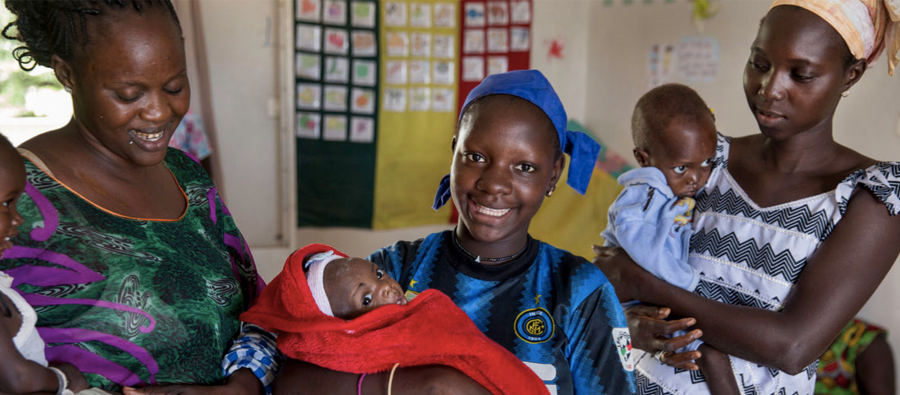COVID-19 and climate change have exacerbated malnutrition and threatened the sustainability and resilience of food systems around the world.
At the Tokyo Nutrition for Growth (N4G) Summit, held 7th-8th December, representatives from governments, business, multilaterals, donors, and other development partners came together to deliver renewed policy and financial commitments to address the global malnutrition and hunger crisis. Notably, the European Union committed US$2.8 billion, the United States committed US$11 billion, and the African Development Bank committed US$1.35 billion.
Today, one third of all people around the world are affected by at least one form of malnutrition. More than 40 per cent of all men and women (2.2 billion people) are now overweight or obese. Unhealthy diets are linked to at least eight million deaths per year, and 45 per cent of deaths among children under five years of age are linked to undernutrition.
“COVID-19 cast a significant impact on nutrition. The pandemic will likely cause 13.6 million more children to suffer from wasting,” said Japan’s Prime Minister, Fumio Kishida, at the Summit. “Let me recall our Sustainable Development Goal to end hunger, achieve food security and improve nutrition, and promote sustainable agriculture by 2030. Now is the time for us to take action. No one should be left behind.”
The Summit is the culmination of the Nutrition for Growth Year of Action – a global effort to bring together country governments, donors, businesses, and UN agencies to accelerate progress on malnutrition.
“We need to shift from just feeding the global population to nourishing it and ending malnutrition in this decade of action,” said Kundhavi Kadiresan, Managing Director, Global Engagement and Innovation, at CGIAR.
Growing rates of inequity, climate crisis, conflict, and global health insecurities, threaten to halt the progress made on malnutrition over the past decade. The commitments made at the Summit were meant to demonstrate the prioritisation of nutrition at a crucial time.
Countries with high instances of malnutrition promised stronger domestic policies and programmes to reduce malnutrition rates. For example, Bangladesh, represented by Prime Minister Sheikh Hasina, committed to cut anemia rates by one-third, stunting among children by one-fifth, and wasting among children by one-quarter within the next five years. The Government of Indonesia committed to fight malnutrition, and specifically to accelerate efforts to reduce stunting nationwide.
UN agencies also renewed their commitments at the Summit:
- By 2025, UNICEF aims to reach at least 500 million children, adolescents and women annually with malnutrition prevention programmes for the prevention of stunting, wasting, micronutrient deficiencies, overweight and obesity.
- By 2030, the World Health Organization (WHO) plans to prevent and manage anemia in women and children and to accelerate progress toward reducing anemia in women of reproductive age by 50 per cent.
- The World Food Programme committed to increase the proportion of its programmes’ beneficiaries who consume healthy diets to 80 per cent by 2025.
In addition to the national commitments, more than a dozen private sector companies made pledges at the Summit. These ranged from supporting improved agricultural practices to improving the quality of their employees’ diets. The private sector link was further emphasised by the UN Food Systems Summit Special Envoy Agnes Kalibata following the Nutrition for Growth Summit, as she highlighted that better nutrition represents a business opportunity of $4.5 trillion a year by 2030.
The next Nutrition for Growth Summit will be held in France in 2024. This will be an opportunity to review progress and accountability for the commitments made at Tokyo’s Nutrition for Growth Summit as the world heads into the final five years of the Sustainable Development Goals.
Watch the sessions from the Summit here.
Videos are available in Arabic, English, French, Japanese, Russian and Spanish.



